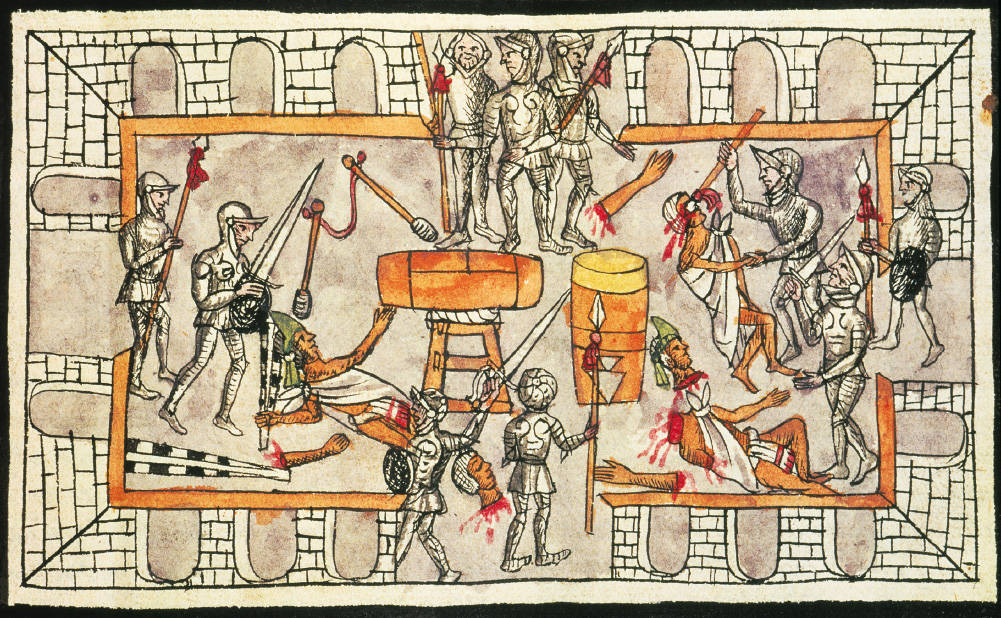Visual Source 13.3
The Massacre of the Nobles
Whatever the character of their initial meeting, the relationship of the Spanish and Aztecs soon deteriorated amid mutual suspicion. Within a week, Cortés had seized Moctezuma, holding him under a kind of house arrest in his own palaces. For reasons not entirely clear, this hostile act did not immediately trigger a violent Aztec response. Perhaps Aztec authorities were concerned for the life of their ruler, or possibly their factional divisions inhibited coordinated resistance.
But in May 1520, while Cortés was temporarily away at the coast, an incident occurred that set in motion the most violent phase of the encounter. During a religious ceremony in honor of Huitzilopochtli, the Aztec patron deity of Tenochtitlán, the local Spanish commander, apparently fearing an uprising, launched a surprise attack on the unarmed participants in the celebration, killing hundreds of the leading warriors and nobles. An Aztec account from the Florentine Codex described the scene:
When the dance was loveliest and when song was linked to song, the Spaniards were seized with an urge to kill the celebrants. They all ran forward, armed as if for battle. They closed the entrances and passageways . . . then [they] rushed into the Sacred Patio to slaughter the inhabitants. . . .They attacked the man who was drumming and cut off his arms. Then they cut off his head, and it rolled across the floor. They attacked all the celebrants stabbing them, spearing them, striking them with swords. . . .Others they beheaded . . . or split their heads to pieces. . . .The blood of the warriors flowed like water and gathered into pools . . . [T]hey invaded every room, hunting and killing.35
Visual Source 13.3 shows a vivid depiction of this “massacre of the nobles,” drawn from the Codex Duran, first published in 1581.

Question
What elements of the description above are reflected in this painting?
Question
What image of the Spanish does this painting reflect?
Question
What do the drums in the center of the image represent?